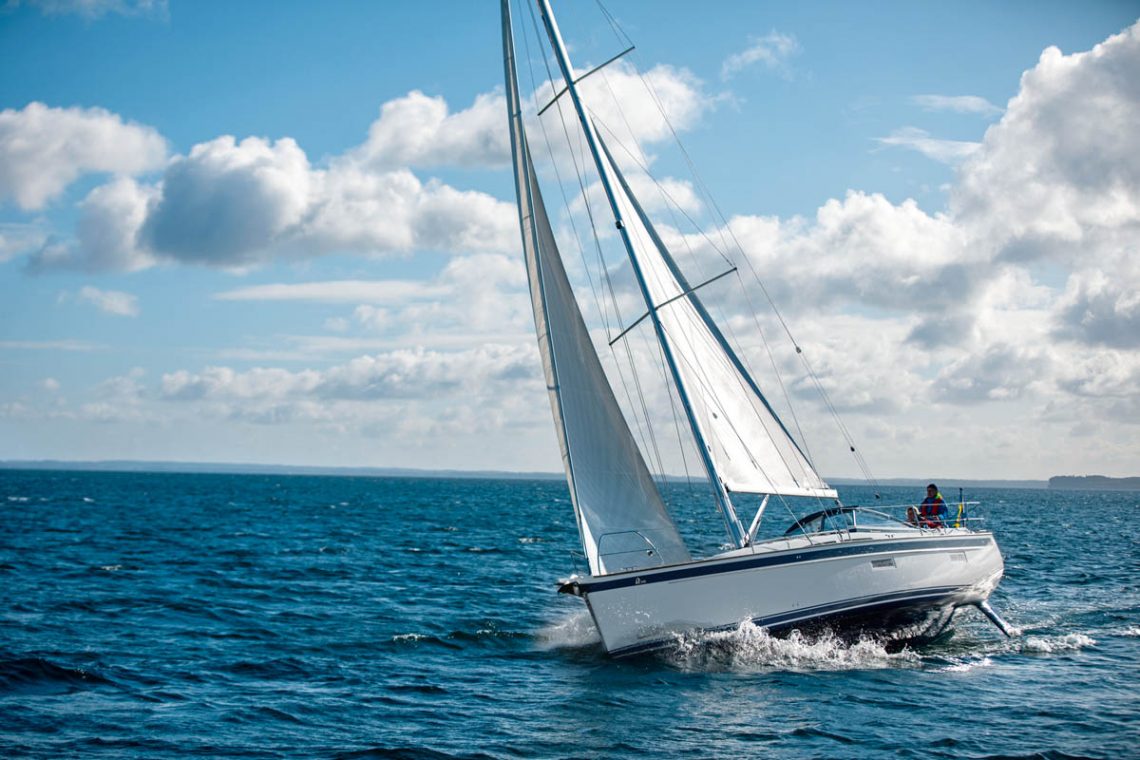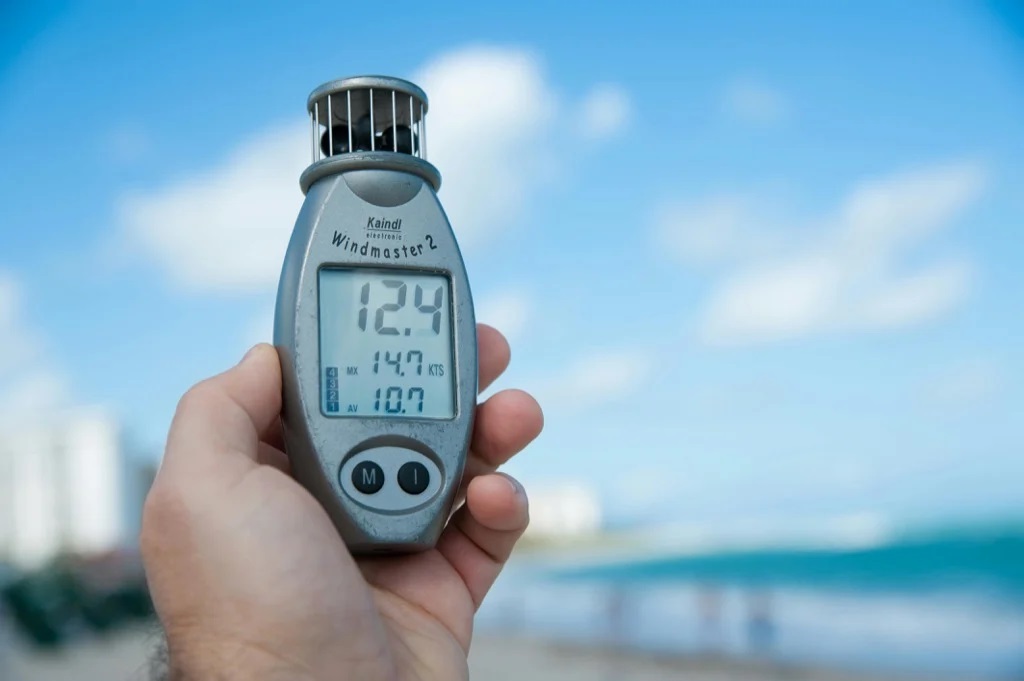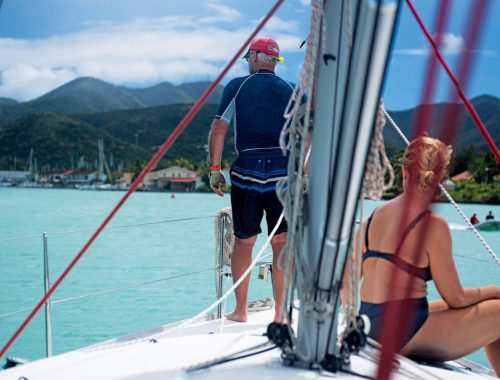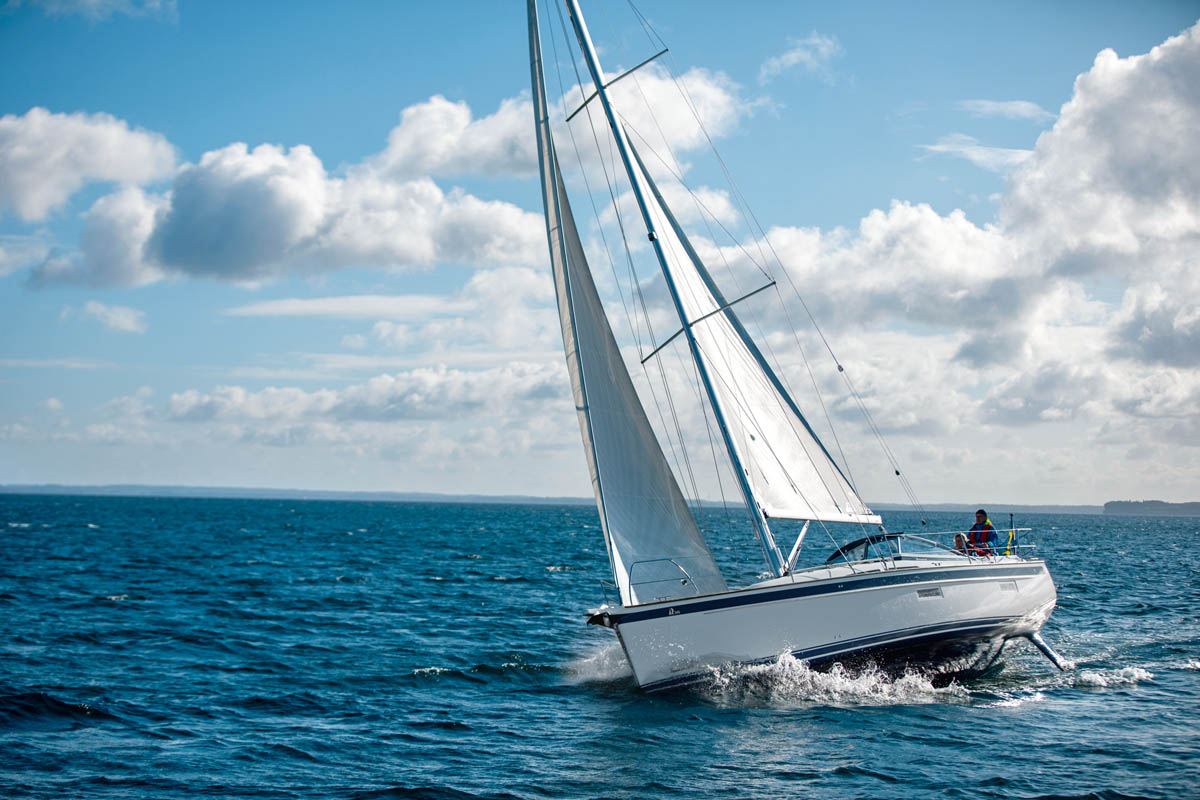
Managing wind gusts: Tips for safe sailing
Wind gusts can make the hearts of many cruising sailors race. Especially in light to moderate winds, a sailboat comes alive and accelerates suddenly. But what should you do when the gusts become too strong?
The hidden danger of wind gusts during a cruise. The sea’s surface begins to change, turning darker, and under the sun thousands of small ripples start to run across the water. These are the signs of a gust. In racing, professionals are trained to identify and communicate to the helmsman the exact direction and the seconds remaining before the gust hits.
With some time and by getting used to observing what happens around you at sea, cruisers can also learn to understand what’s about to happen and even take advantage of gusty winds. Or, when gusts become too strong, learn how to protect the boat to avoid an involuntary round-up.
Discover the best boat rental deals

Understanding wind gusts
Gusts are short-lived increases in wind speed that are significantly higher than the average wind speed. The Meteorological Service defines gusts as bursts lasting at least 3 seconds and exceeding the average wind speed by at least 10 knots. Gusts reaching twice the average wind speed are becoming increasingly common—a phenomenon that has likely intensified due to climate change.
Gusts are generated by turbulent air currents that can occur in two ways:
-
Dynamic turbulence. Hills or mountains on the windward side disturb the airflow. When wind hits terrain or obstacles, it weakens and becomes turbulent, resulting in an irregular airflow combined with sudden changes in direction.
-
Thermal turbulence. Large temperature differences between the air layers near the surface (land or water) and the upper atmosphere create instability. When the temperature gap exceeds a certain threshold, the air becomes unstable: warmer air rises in updrafts, while cooler upper air sinks. This vertical movement produces wind gusts.

Observing the sea surface
Observing the surface of the sea becomes essential when it comes to reading the gusts that will hit our sails. Because of the coastline’s orography, the wind encounters many obstacles: buildings, hills—anything along the coast influences the wind’s intensity and direction. This is why sailing with an offshore wind (blowing from land) is more complex than usual. Wind strength can shift from 10 to 30 knots within seconds, and the direction may change abruptly, sometimes by as much as 90 degrees.

How to handle a normal gust
We all know that the wind we feel while sailing is apparent wind—that is, the result of true wind combined with the wind generated by our own movement. Once the sails are trimmed properly and the boat is well-balanced, the rudder becomes almost unnecessary, and only tiny corrections are needed to maintain course. Under a gust, however, the sudden increase in true wind disrupts this equilibrium. On cruising boats, the boat does not immediately accelerate when true wind increases. This inertia causes the apparent wind to increase and shift aft, giving the helmsman a few degrees of a “lift,” offering the chance to head up and gain ground to windward.
Practically speaking, if the gusts are moderate, we can use them to our advantage. Especially when the temporary increase in wind comes from the same direction as the true wind, it is enough to follow the slight aft shift of the apparent wind by steering up until the jib begins to show the first signs of luffing. When the boat’s speed increases, or the gust fades and conditions return to normal, simply bear away slightly to keep the sails properly trimmed. It becomes a kind of game between the helmsman and the wind—gust after gust allowing you to climb to windward, perhaps avoiding an unnecessary tack to round a headland or reach a harbour entrance.

Staying safe in strong gusts
Gusts can also be less “friendly” and require more complex manoeuvres to keep the boat under control. A strong gust pushes the centre of effort aft, making the boat more prone to rounding up, and it also causes significant heeling. This increases the lift generated by the leeward side of the hull, which in turn pushes the boat even more forcefully into the wind. Often, the rudder alone cannot counter these effects.
If you see a strong gust approaching, you can anticipate your manoeuvres. The first action is to head up until the jib begins to luff, steering as close as possible to the no-go zone. At the same time, ease the mainsheet traveller to leeward to increase twist, opening the top part of the mainsail and reducing pressure. How much should you ease? It depends on the strength of the gust, but the helmsman will feel the pressure on the helm and call “mainsheet out” until the boat is fully under control.
On many modern cruising boats, the mainsheet traveller is often small, inefficient, or located on the coachroof, leading the mainsheet close to the boom’s centre. In such cases, it is more effective to work directly with the mainsheet and ease it. Once the gust passes, you can slowly bear away to your normal course, bring the traveller back toward the centre, and re-trim the mainsheet if you had to ease it significantly.
Discover the best boat rental deals
You May Also Like

Effortlessly managing harbor maneuvers
05/02/2024
Tropea, one of the most beautiful seaside villages in Italy
28/11/2023






